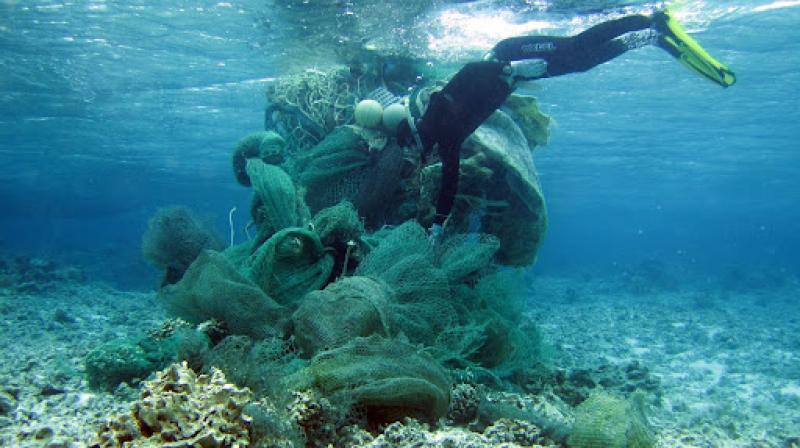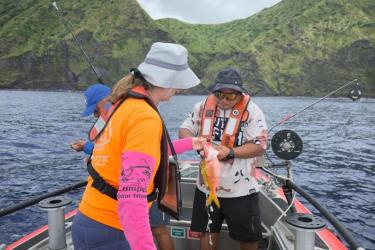When fishing nets are lost or abandoned, they can drift at sea, threatening marine life. Fish aren’t the only animals at risk—seals, dolphins, whales, turtles, and birds can become entangled in these nets. The nets can also snag coral reefs, damaging or smothering the coral. A recent study examined the movement of several fishing nets in the Northwestern Hawaiian Islands, where they are known to aggregate.
The Northwestern Hawaiian Islands in the remote North Pacific Ocean are uniquely situated—they act as a sieve, trapping derelict fishing nets drifting around the Pacific Ocean. The chain of low-lying islands and atolls are home to unique and threatened wildlife, such as Hawaiian monk seals and green sea turtles. These islands are also culturally significant, which adds to the importance of protecting this special place. The U.S. has designated these islands as Papahānaumokuākea Marine National Monument, which provides it with special protection.
The Pacific Islands Fisheries Science Center has partnered with many agencies since 1996 to remove marine debris to protect the precious environment in Papahānaumokuākea.
In 2018, the debris removal team implemented several scientific techniques in order to increase efficiency of removal efforts in the future. One of these methods was to attach satellite-transmitting buoys to several nets to track their movement within Manawai atoll (also known as Holiokauaua or Pearl and Hermes). If we can understand the movement of these nets over time, we can improve our ability to locate, track, and remove harmful marine debris. With increased predictability, we can save money and time by concentrating our clean-up efforts. If, for example, the derelict nets aggregate within a certain area in the atoll, we could target that “hotspot” in future net removals.
During the 2018 mission, the team attached six buoys to six nets, and tracked their movement for 3 years. In 2021, they returned to Manawai and found four of those six nets, meaning they stayed on the same reef for 3 years!
Two nets tagged near the exterior of the atoll moved towards the center of the atoll, in the same direction of the prevailing winds from the northeast. Unfortunately, these two nets and buoys stopped transmitting their location after about 2 months, so the team could not recover them. The other four nets were tagged closer to the interior of the atoll and remained in the same general location.
This information will greatly assist future teams in their removal efforts. They can concentrate on the outer reef where nets enter the atoll, in an effort to remove the nets before they cause damage to the interior reefs. If they are unable to conduct regular missions, they can also concentrate efforts on the interior of the atoll where nets can sit for years at a time.







